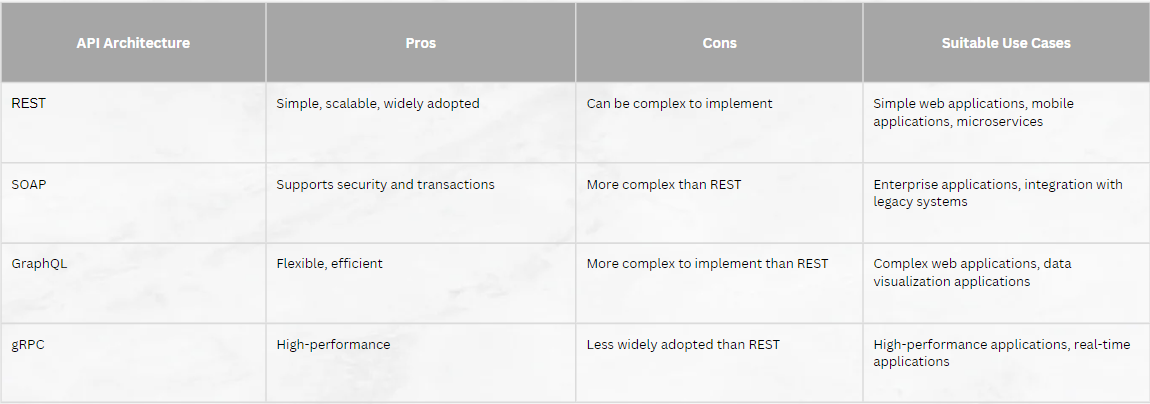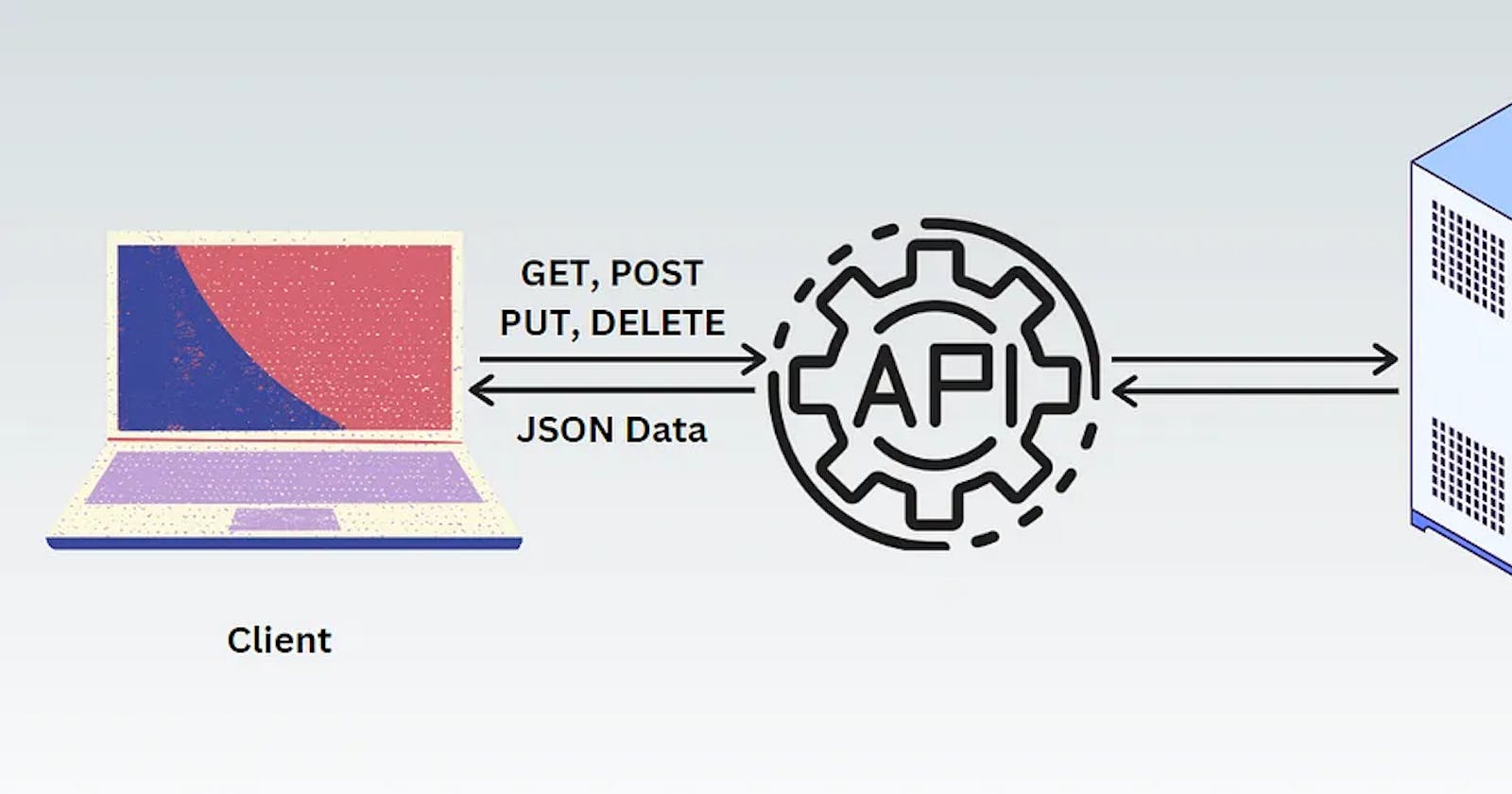In today’s interconnected world, Application Programming Interfaces (APIs) play a crucial role in enabling communication between different systems and applications. APIs define the protocols and rules for how software components should interact, allowing developers to build powerful and scalable applications.
Among the various API architectures available, Representational State Transfer (REST) has gained significant popularity due to its simplicity, scalability, and widespread adoption. In this comprehensive guide, we will delve into the world of REST API and explore various API architectures, providing a deep understanding of their principles and use cases. So, let’s embark on this journey into the world of APIs!
Understanding APIs and their Importance:
In this section, we will start by gaining a solid understanding of APIs, their significance in modern software development, and the benefits they offer. We’ll explore how APIs facilitate seamless integration, improve efficiency, and enable the development of complex applications by leveraging pre-existing functionalities.
An API is a software intermediary that allows two applications to talk to each other. APIs are used to connect different systems, such as databases, web servers, and mobile devices. They allow developers to build applications that can access and use data and functionality from other applications without having to know how those applications are implemented.
APIs offer a number of benefits, including:
Seamless integration: APIs make it easy to integrate different systems and applications. This can save time and money, and it can also help to improve the overall performance of your applications.
Improved efficiency: APIs can help to improve the efficiency of your applications by providing a standardized way to access data and functionality. This can reduce the need to write custom code, and it can also make it easier to maintain your applications.
Enhanced flexibility: APIs can help to enhance the flexibility of your applications by making it possible to add new features and functionality without having to make changes to the underlying code. This can help you to keep your applications up-to-date and responsive to changing business needs.
Introduction to REST API:
REST (Representational State Transfer) is an architectural style for designing APIs. REST APIs are based on the HTTP protocol, and they use standard HTTP methods (GET, POST, PUT, DELETE) to access resources. Resources are identified by URIs (Uniform Resource Identifiers), and they can be anything from a simple data object to a complex web service.
REST APIs offer a number of advantages over other API architectures, including:
Simplicity: REST APIs are relatively simple to design and implement. This makes them a good choice for developers who are new to API development.
Scalability: REST APIs are scalable and can be easily adapted to meet the needs of growing applications.
Widespread adoption: REST APIs are widely adopted by both vendors and developers. This makes it easy to find documentation and support for REST APIs.
Exploring Various API Architectures:
In addition to REST, there are a number of other API architectures available. Some of the most popular alternatives include:
SOAP (Simple Object Access Protocol): SOAP is an older API architecture that uses XML-based messages to communicate between clients and servers. SOAP is more complex than REST, but it offers a number of features that REST does not, such as security and transaction support.
GraphQL: GraphQL is a newer API architecture that allows clients to request specific data structures from servers. GraphQL is more flexible than REST, but it is also more complex to implement.
gRPC: gRPC is a high-performance API architecture that uses the Protobuf serialization format. gRPC is similar to REST in terms of its simplicity and scalability, but it offers a number of performance advantages.
Key Principles of REST API Design:
To build effective REST APIs, it’s crucial to adhere to specific design principles. Some of the key principles of REST API design include:
Stateless communication: REST APIs should be stateless, which means that each request should be independent of any previous requests. This makes it easier to scale REST APIs and to improve their performance.
Uniform interface: REST APIs should use a uniform interface, which means that they should all use the same HTTP methods and URIs to access resources. This makes it easier for developers to learn how to use REST APIs.
Resource-based architecture: REST APIs should be based on a resource-oriented architecture, which means that they should expose resources as URIs. This makes it easier for clients to discover and interact with resources.
Client-server interaction: REST APIs should use a client-server interaction model, which means that clients should make requests to servers and servers should respond to those requests. This makes it easier to decouple clients and servers and to improve scalability.
Caching: REST APIs should support caching, which means that clients should be able to store responses to requests in memory and reuse them for subsequent requests. This can improve the performance of REST APIs by reducing the number of requests that need to be made to the server.
Layered Architecture: REST APIs should be designed in a layered architecture, which means that they should be divided into different layers, such as the presentation layer, the application layer, and the data layer. This makes it easier to develop, test, and deploy REST APIs.
HATEOAS (Hypermedia as the Engine of Application State): REST APIs should use HATEOAS, which means that they should provide links to other resources in the response. This makes it easier for clients to navigate through the API and to discover new resources.
These principles are not absolute rules, but they provide a good starting point for designing REST APIs. By following these principles, you can create APIs that are scalable, flexible, and easy to use.
Technologies for Creating REST APIs:
To get started with creating REST APIs, you’ll need to choose a technology stack that suits your needs. Here are some popular technologies you can consider:
Node.js with Express: Node.js is a popular JavaScript runtime that allows you to build scalable and high-performance applications. Express is a minimalistic and flexible web application framework for Node.js. Here’s an example of creating a simple CRUD API using Node.js with Express
const express = require('express'); const app = express(); let users = [ { id: 1, name: 'John Doe', age: 30 }, { id: 2, name: 'Jane Smith', age: 25 }, ]; app.use(express.json()); app.get('/users', (req, res) => { res.json(users); }); app.get('/users/:id', (req, res) => { const id = req.params.id; // Find user by ID and return JSON response // ... res.json(user); }); app.post('/users', (req, res) => { const newUser = req.body; // Create new user and return JSON response // ... res.json(newUser); }); app.put('/users/:id', (req, res) => { const id = req.params.id; const updatedUser = req.body; // Update user by ID and return JSON response // ... res.json(updatedUser); }); app.delete('/users/:id', (req, res) => { const id = req.params.id; // Delete user by ID and return JSON response // ... res.sendStatus(200); }); app.listen(3000, () => { console.log('Server is running on port 3000'); });
GoLang with Fiber: GoLang is a powerful and efficient programming language known for its performance. Fiber is a web framework for GoLang that provides an Express.js-like experience with fast routing and middleware support. Below is an example of creating a simple CRUD API using GoLang with Fiber
package main import ( "github.com/gofiber/fiber/v2" ) type User struct { ID int `json:"id"` Name string `json:"name"` Age int `json:"age"` } var users = []User{ {ID: 1, Name: "John Doe", Age: 30}, {ID: 2, Name: "Jane Smith", Age: 25}, } func main() { app := fiber.New() app.Get("/users", func(c *fiber.Ctx) error { return c.JSON(users) }) app.Get("/users/:id", func(c *fiber.Ctx) error { id := c.Params("id") // Find user by ID and return JSON response // ... return c.JSON(user) }) app.Post("/users", func(c *fiber.Ctx) error { user := new(User) if err := c.BodyParser(user); err != nil { return err } // Create new user and return JSON response // ... return c.JSON(newUser) }) app.Put("/users/:id", func(c *fiber.Ctx) error { id := c.Params("id") user := new(User) if err := c.BodyParser(user); err != nil { return err } // Update user by ID and return JSON response // ... return c.JSON(updatedUser) }) app.Delete("/users/:id", func(c *fiber.Ctx) error { id := c.Params("id") // Delete user by ID and return JSON response // ... return c.SendStatus(fiber.StatusOK) }) app.Listen(":3000") }
Python with Flask: Python is a versatile programming language with a wide range of frameworks for web development. Flask is a popular micro web framework for Python that provides a simple and intuitive way to create REST APIs. Here’s an example of creating a simple CRUD API using Python with Flask
from flask import Flask, jsonify, request app = Flask(__name__) users = [ {'id': 1, 'name': 'John Doe', 'age': 30}, {'id': 2, 'name': 'Jane Smith', 'age': 25}, ] @app.route('/users', methods=['GET']) def get_users(): return jsonify(users) @app.route('/users/<int:user_id>', methods=['GET']) def get_user(user_id): # Find user by ID and return JSON response # ... return jsonify(user) @app.route('/users', methods=['POST']) def create_user(): new_user = request.get_json() # Create new user and return JSON response # ... return jsonify(new_user), 201 @app.route('/users/<int:user_id>', methods=['PUT']) def update_user(user_id): updated_user = request.get_json() # Update user by ID and return JSON response # ... return jsonify(updated_user) @app.route('/users/<int:user_id>', methods=['DELETE']) def delete_user(user_id): # Delete user by ID and return JSON response # ... return '', 204 if __name__ == '__main__': app.run()
These examples provide a starting point for creating REST APIs using different technologies. Remember to customize the code based on your specific requirements and project needs.
Comparing REST API with Other Architectures:
To gain a comprehensive understanding of REST API, we’ll compare it with other popular API architectures. We’ll examine the pros and cons of REST API and discuss suitable use cases for different architectures based on their strengths and weaknesses.

Choosing the right API architecture depends on various factors, including project requirements, scalability needs, performance considerations, and team expertise. Evaluate your specific use case and consider the strengths and weaknesses of each architecture before making a decision.
By understanding the differences and trade-offs between REST API and other architectures, you can make an informed choice that aligns with your project goals and provides a solid foundation for your API development.
Conclusion:
In the concluding section, we’ll summarize the key points discussed throughout the article. We’ll emphasize the importance of understanding API architectures and their implications for building scalable, flexible, and efficient applications. We’ll also encourage readers to explore further, experiment with different architectures, and choose the most suitable one based on their project requirements and constraints.
This article aims to be a valuable resource for developers looking to
Enhance their understanding of APIs
Choose the most suitable architecture for their projects
I hope you found this article helpful!

